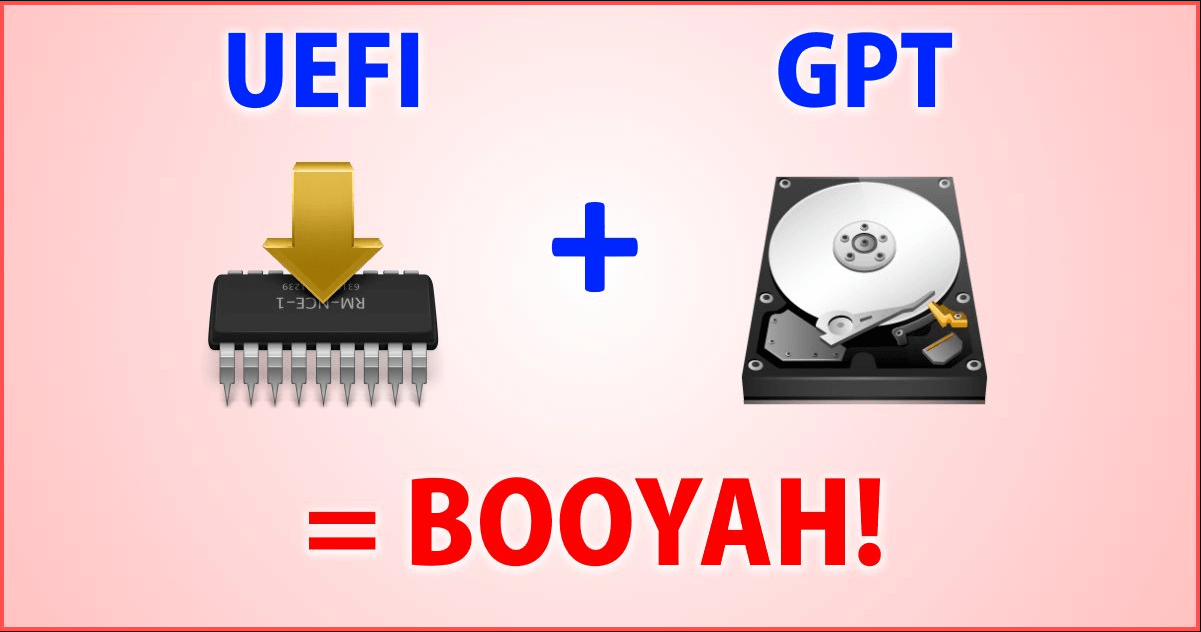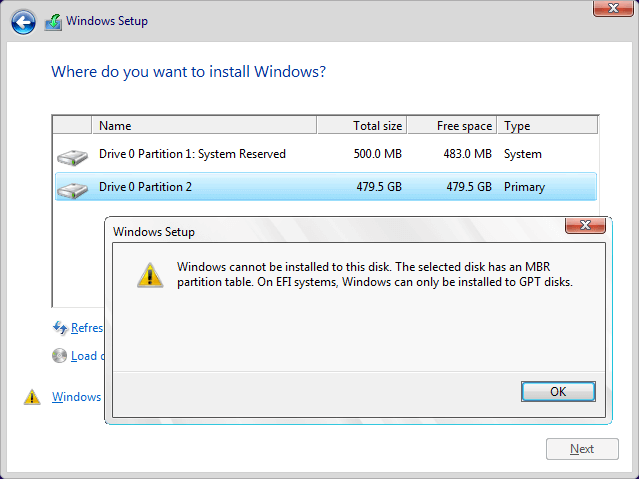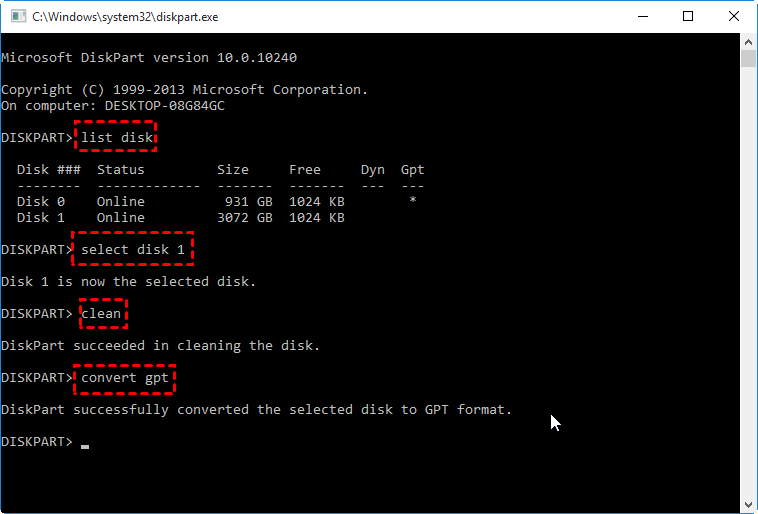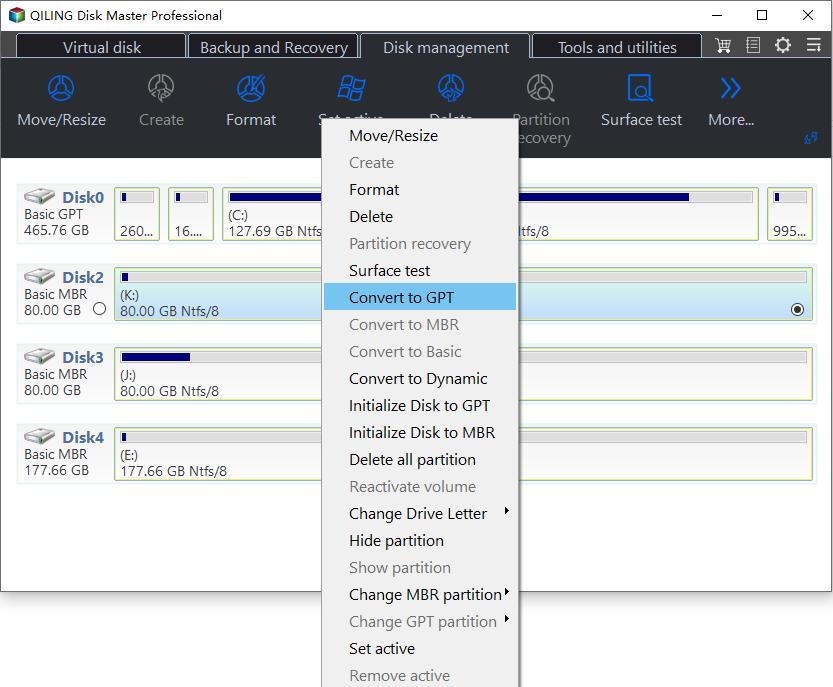Are UEFI and GPT Required to Install Windows 11?
UEFI and GPT are needed for Windows 11 installation?
UEFI (Unified Extensible Firmware Interface) is a low-level software that starts supporting new technologies once you power on your computer before the OS gets booted, similar to BIOS. It's based on the EFI 1.10 specification that was originally published by Intel.
GPT (GUID Partition Table) is a replacement for MBR (Master Boot Record) that defines hard disk partitions in PCs with UEFI startup firmware. Unlike MBR, which limits partitions to 4 primary or 3 primary plus 1 extended, GPT allows up to 128 primary partitions on one disk. Additionally, GPT supports a significantly larger usable space of 9.4ZB, compared to the 2TB limit of MBR.
Windows 11 has been released, and millions of users worldwide are eager to upgrade, but many are facing a problem: they can't complete the Windows 10 to Windows 11 upgrade and instead receive the error message "Windows cannot be installed to this disk. The selected disk is of the MBR partition table".
Users see this error because the partition table is MBR while the boot mode is UEFI and they don't match each other. This mismatch causes the error, and it's not a requirement for a clean Windows 11 installation, but rather a necessity for a direct upgrade from Windows 10.
How to convert the bootable disk to GPT?
A Windows 11 clean install can be complex for computing novices, leading many to upgrade from Windows 10 using the "Check for Update" feature. However, this approach cannot avoid the issue of partition style and boot mode. Since the target disk is currently in MBR, which is not supported by UEFI boot mode, it needs to be converted to GPT.
Method 1. Use CMD DiskPart for the conversion
DiskPart is a Windows 10 utility that allows for various disk management tasks, including partition deletion, formatting, creation, and MBR-GPT conversion. However, converting MBR to GPT with DiskPart requires deleting all partitions on the hard disk, which can result in severe data loss. Furthermore, DiskPart cannot delete partitions on a system disk, and in such cases, booting Command Prompt from a Windows 10 installation media, typically a USB flash drive, is necessary.
1. Run Command Prompt from the USB.
2. 1. Open the Command Prompt as Administrator.
3. Type "select disk 1" and hit "ENTER" to choose the hard disk you want to convert, where "disk 1" refers to the specific hard disk you're targeting for the conversion process.
4. The command to delete all partitions on disk 1 is: `clean` and hit `ENTER`.
5. To convert a disk from Master Boot Record (MBR) to GUID Partition Table (GPT), type "convert gpt" and press the "ENTER" key. This command will initiate the conversion process, which may take a few seconds to complete.
1. The given polynomial is $x^3-6x^2+11x-6$.
Method 2. Try the best third-party disk manager
DiskPart is a practical tool for converting MBR to GPT, but it has a major drawback: it requires deleting all partitions on the target disk, posing a significant risk to data security. Therefore, it is essential to explore alternative methods to avoid data loss.
I highly recommend Qiling Disk Master Professional, the most powerful and efficient disk manager globally. With it, you can seamlessly convert MBR to GPT or GPT to MBR without deleting any partitions, and it can run directly from the desktop. This versatile tool also allows users to perform additional operations like partition splitting and �ree space allocation, making it an ideal choice for disk management needs.free space allocation, making it an ideal choice for disk management needs.
GPT is required for Windows 11, so if your computer is currently running on MBR, you must convert it to GPT. You can download a demo to try the process.
Step 1. Install and launch Qiling Disk Master Professional, select the target disk, right-click, and choose "Convert to GPT" to initiate the conversion process.
Step 2. Waiting a while to convert the disk.
It could take seconds to minutes for the process to be completed. So, be patient.
How do I enable UEFI for Windows 11 installation?
The boot disk has been successfully converted to GPT, and the next step is to ensure the boot mode is UEFI. To do this, check the current boot mode by going to "System Information" in the Start panel and looking under "BIOS Mode." If it's Legacy, you'll need to change it to UEFI.
1. To enter the EFI Setup menu during computer startup, press a specific key repeatedly, usually Del for laptops and F2 for desktops, or press Esc to see a guide. Select BIOS Setup from the menu.
2. Under the Boot tab, you can switch between Legacy and UEFI boot modes.
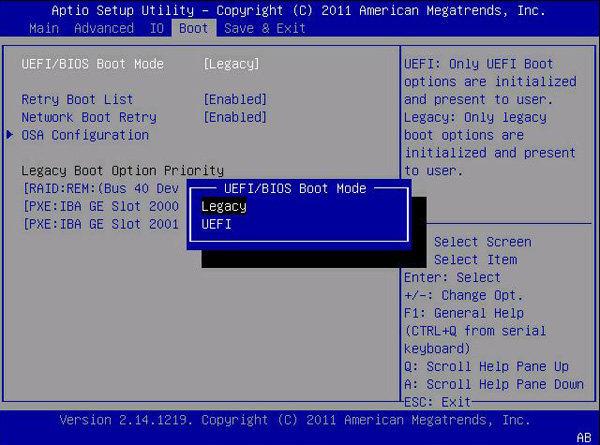
3. Press F10 to save the changes and then, exit.
Note: To run Windows 11 normally, you need to enable TPM and Secure boot in UEFI.
Conclusion
While upgrading to Windows 11, both UEFI and GPT are required if you're upgrading directly from Windows 10 using the "Check for Update" feature. However, if you're performing a clean install, they're not necessary. If you need to convert MBR to GPT for an upgrade, Qiling Disk Master Professional can help without data loss, and a server edition is available for servers.
Related Articles
- Is UEFI Required for Windows 11 Installation?
Is UEFI required for Windows 11? This post shows clear details of UEFI and help users to successfully upgrade to Windows 11. - How to Install Windows 11 from USB without losing data?
How to install Windows 11 from USB without data loss? In this post, you'll not only learn the right steps to get it done, but also, you'll learn to make a portable and bootable Windows 11 USB stick so that you can carry it around.
